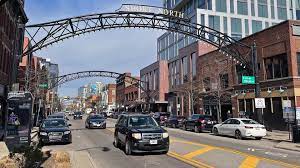Columbus, Ohio, boasts a rich tapestry of cultural districts, each contributing its unique charm and character to the city’s landscape. For real estate agents in Columbus, understanding these diverse cultural districts is paramount, as they significantly influence property values, buyer preferences, and market trends. This comprehensive guide delves into the intricacies of Columbus’s cultural districts and their impact on real estate agent columbus ohio dynamics.
Understanding Columbus’s Cultural Districts:
Cultural districts in Columbus are defined as neighborhoods or areas known for their distinctive cultural heritage, artistic expression, and community engagement.
Characteristics: Each cultural district exhibits unique features, including architectural styles, cultural amenities, artistic institutions, and community demographics.
Significance: Cultural districts play a crucial role in shaping the city’s identity, fostering creativity, and enhancing the quality of life for residents.
Overview of Key Cultural Districts:
Short North Arts District:
Description: Known for its vibrant arts scene, eclectic boutiques, and trendy dining establishments.
Influence on Real Estate: Properties in the Short North command premium prices due to high demand from buyers attracted to its cultural vibrancy and walkability.
Market Trends: Real estate agents should stay informed about developments, new listings, and market fluctuations in the Short North to effectively serve clients.
German Village:
Description: A historic neighborhood renowned for its charming brick houses, cobblestone streets, and European ambiance.
Influence on Real Estate: German Village properties retain their value and appeal due to their architectural significance and sense of community.
Client Considerations: Real estate agents should educate clients about the unique heritage and lifestyle offerings of German Village to align with their preferences.
Olde Towne East:
Description: An up-and-coming neighborhood undergoing revitalization, characterized by its diverse community and historic architecture.
Influence on Real Estate: Olde Towne East presents opportunities for investment and development, attracting buyers seeking affordable yet stylish homes.
Market Analysis: Real estate agents should conduct thorough market analyses to identify investment prospects and guide clients through the purchasing process.
III. Strategies for Real Estate Agents:
Market Research: Stay updated on market trends, property values, and neighborhood developments in cultural districts.
Client Education: Inform clients about the cultural significance, amenities, and lifestyle offerings of different districts to align with their preferences.
Networking: Build relationships with local stakeholders, businesses, and community organizations in cultural districts to enhance market knowledge and client referrals.
Adaptability: Be flexible and adaptable to changing market conditions, emerging trends, and client needs within cultural districts.
Conclusion:
Columbus’s cultural districts are integral to the city’s identity and real estate landscape. For columbus real estate agent, a comprehensive understanding of these districts is essential for effectively serving clients, identifying market opportunities, and navigating the dynamic real estate market. By embracing the cultural richness and diversity of Columbus’s neighborhoods, real estate agents can thrive in this vibrant and ever-evolving market.







